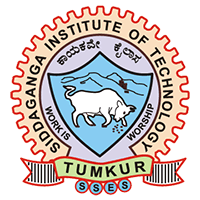|
Course Learning Objectives (CLOs): This course will make to student to: |
|
|
1 |
Define fundamental OS abstractions such as processes, threads, files etc, (L1-knowlegde). |
|
2 |
Visualize the intricate relationship between an operating system and its underlying hardware (L1-knowlegde). |
|
3 |
Explain scheduling algorithms, deadlock detection algorithms and memory management strategies (L2-Comphrension. |
|
4 |
Apply the principles of concurrency and synchronization, to write concurrent programs/ software (L3-Application). |
COURSE OUTCOMES (COS): At the end of the course the student will be able to:
|
CO1 |
: |
Identify the services, functions and structure of different operating systems. |
|
CO2 |
: |
Apply and analyze appropriate scheduling algorithm for process selection and execution. |
|
CO3 |
: |
Identify and analyze the techniques used to solve process synchronization issues. |
|
CO4 |
: |
Apply and analyze various deadlock prevention, avoidance, detection and recovery mechanisms to solve real world problems |
|
CO5 |
: |
Analyze the performance of various memory management techniques and page replacement algorithms |
